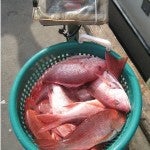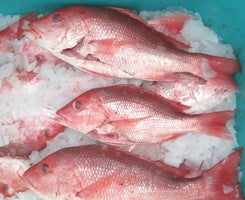For another year, the National Oceanic and Atmospheric Administration (NOAA) has approved an increase in the total allowable catch (TAC) for red snapper in the Gulf of Mexico. The TAC is the overall cap (in pounds) of fish that fishermen are allowed to catch each year and is distributed to the commercial sector, which receives 51% of it, and the recreational sector, which receives 49%.
This increase of 12% brings the TAC up to 8.08 million pounds of red snapper. Overall, the TAC has been increased by 60% since the beginning of the commercial catch share program for red snapper in 2007. Both commercial and recreational fishermen have seen consistent increases in the amount of fish they are able to catch since the catch share program began.
Last week, on the first of June, the recreational red snapper season began. Recreational fishermen have grown increasingly frustrated by short fishing seasons. This year they will only have 40 days to fish for red snapper, down from 48 days in 2011. And recreational fishermen are still being managed by closed seasons and bag limits. Read More

